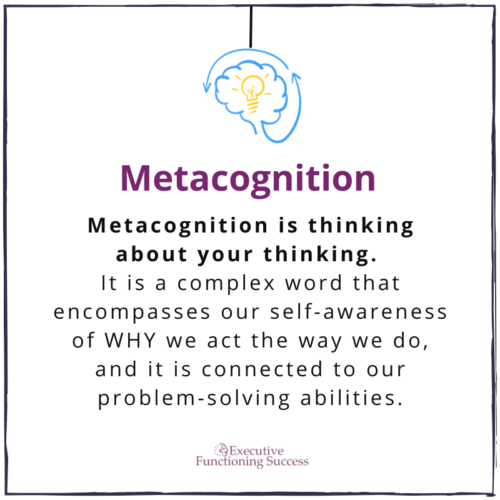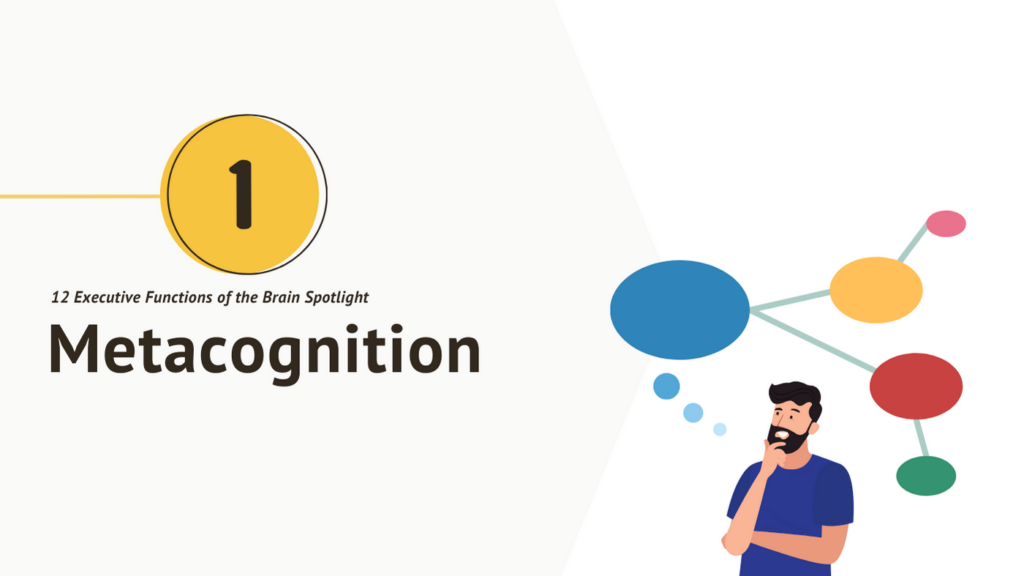Way back in 2009, a local neuropsychologist referred to me as an expert in teaching executive functioning skills. I paused and thought, “I am? What are executive functions?” I’d never heard the term. So I Googled it.
At that time I got a single hit, just ONE for executive functions! The phrase “executive functioning” was just barely making its way out of academia and into psychological testing.
Google that phrase today, and goodness, the list is long. Almost everybody I come across has some sort of awareness of what that means.
While this shift has made it much easier to describe my work, there is still no agreed-upon definition for executive functioning. It depends upon who you are following in the research world.
I have chosen to stick with the model put forward by Peg Dawson and Richard Guare. It is simple enough to understand and yet sufficiently detailed to show the complexity within the brain required to get things done. They break executive functions down into 12 separate skills. Over the coming months, I will be diving into one brain skill each month.
The Starting Point for Understanding the First (and Most Important!) Executive Function of the Brain
 In my Seeing My Time ® program, I have my clients evaluate the strengths and weaknesses of their own brain, using the Dawson and Guare model.
In my Seeing My Time ® program, I have my clients evaluate the strengths and weaknesses of their own brain, using the Dawson and Guare model.
The first word we delve into is still unfamiliar to most: Metacognition.
Interestingly, that word is starting to move into common use. The Wall Street Journal recently did a whole article on metacognition: “The Power to Decide How You Feel”. I was both amazed and delighted because metacognition is my favorite five-syllable word.
Metacognition is key to the success of my clients. It is typically described as “thinking about thinking.” I tweak that a bit to define it as, “thinking about MY thinking.” It is a complex word that encompasses our self-awareness of WHY we act the way we do, and it is connected to our problem-solving abilities.
Metacognition is a Pillar of Executive Functioning
We can’t change our behavior unless we change our metacognition – the way we think. I think of metacognition as the conversation we have in our mind every time we make a choice as we move through the day. For example:
- Do I get out of bed now, or snuggle down for a bit longer?
- Do I do my dishes or leave them on the counter or in the sink?
- Do I pick up the living room or leave it for another day?
- Do I do some exercise or stay on the couch?
- Do I work on the project that is coming due or put it off?
- Do I play a video game or call a friend to set up a visit?
- Do I make my lunch for work or eat out?
- Do I go to bed on time or do I keep watching Netflix?

Metacognition allows us to interrupt thought patterns in order to change our behavior.
Wisdom from an Executive Function Client
Recently a delightful SMT Private Sessions client summed up metacognition with a spin on Hamlet. It was so wonderful that I told him that I wanted to use it and give him credit. He gave me permission to use his first name. Here is his wisdom:
“To do, or not to do. That is the question.”
Rodney
Rodney hit the nail on the head! Metacognition and executive functioning boil down to answering that question just about every minute of every day. It is about choice. We all make choices every day.
We build metacognition when we are able to evaluate the outcome of those choices. We can truly change our behavior by listening to the guidance of our wise prefrontal cortex to choose the action that moves us forward into feeling capable or we can choose to give into our emotional brain’s desires or fears which perpetuate our feeling incapable.
To do, or not to do? Pause and think about that. Try to become conscious of the choices you make and observe the result. Do you want your life to change? You can make a different choice. That’s very powerful.
Little by little…
Marydee


 In my Seeing My Time ® program, I have my clients evaluate the strengths and weaknesses of their own brain, using the Dawson and Guare model.
In my Seeing My Time ® program, I have my clients evaluate the strengths and weaknesses of their own brain, using the Dawson and Guare model.